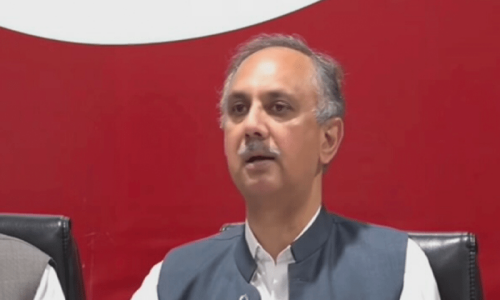
KARACHI: The National Nutrition Survey (NNS) 2011 has determined Sindh as the poorest and most food deprived province of the country, with only 28 per cent households having food security.
The details of the survey, which was conducted last year after a decade, show that little has changed over the last decade in terms of core maternal and childhood nutrition indicators in the province.
Unicef, Pakistan Medical Research Council and the nutrition wing of the federal government supported and collaborated with the Aga Khan University, Pakistan, which completed the survey with Prof Zulfiqar A. Bhutta as the chiefinvestigator.
The situation, according to an expert, is alarming and calls for an enhanced national awareness and welldesigned interventions to reduce widespread malnutrition and poor dietary practices particularly among women and children in Sindh.
The latest study, a crosssectional survey involving about 30,000 sample households in all the urban and rural areas of the country, showed a gain in iodine status, which was however counterbalanced by significant deterioration in vitamin A status and little to no gain in other areas of micronutrient deficiencies.
The details of the new survey undertaken with specific aims of establishing the current benchmark of nutrition and related indicators for gauging progress along the targets set for the Millennium Development Goals (MDG) have alreadybeen announced in other provinces and the capital of the country.
The results showed that about 42pc of the households were food secure while the remaining 58pc were food insecure (adults and not children or both experienced the inadequacy of the household food supply without hunger or with hunger in the household) at national level.
The proportion of food insecure household was categorised as food insecure without hunger (28.4pc), food insecure with moderate hunger (19.8pc) and food insecure with severe hunger (9.8pc).
Sindh appeared as the poorest and food deprived province,because 72pcofthe sample households were found to be food insecure.
They included 21.1pc without hunger, 33.8 with moderate hunger and 16.8 with severe hunger.
In contrast, 4.3pc of the sample households in the Azad Jammu and Kashmir were food insecure with severe hunger, 4.5pc in Khyber-Pakhtunkhwa, 5.8pc in Fata, 8.8pc in Punjab, 8.9pc in Gilgit-Baltistan and 11.5pc in Balochistan.
Interestingly, it was found that haemoglobin levels of both pregnant and non-pregnant women were at the maximum in Sindh.
Against the national level of 50.5pc non-pregnant women having haemoglobin within normal range, Sindh had 61.1pc such women, followed by Punjab with 48.8pc, Balochistan 48.7pc, Fata 45.5pc, AJK-41.3pc, KP 36.3pc and GB 23.4pc.
The data regarding pregnant women indicated that 51 per cent of women were haemoglobin deficient at the national level. Of them, 60.2pc belonged to Sindh, followed by 49.7pc from Punjab, 48.1pc from Balochistan, 43pc from the AJK, 35pcfrom the GB and 28.3pc from KP.
Vitamin D deficiency It was also found that there was a widespread deficiency of Vitamin D in Pakistan's non-pregnant mothers (85pc) and 90.5 per cent of them lived in Sindh.
Also of the 86.1pc pregnant women with Vitamin D deficiency at the national level, Sindh had 84.6 per cent.
Discussing the prevalence of malnutrition among children, the latest report said that against the rate of 43pc stunting at national level, Sindh had 70pc rate.
Wasting in Sindh was found at 19.4pc against the overall national rate of 16.8pc.
Against the national level rate of anaemic children62.1pc, Sindh had 73.3pc of sample children anaemic, with severe or moderate deficiency of haemoglobin level.
The specific objectives of the NNS-2011 were assessment of the population nutritional status, especially of women and children; to collect data on height, weight and age of children between six and 59 months, mothers of these children, adolescent girls, adults and elderly; and to collect data on food intake and food security.
The report said that the rate of underweight children had dropped in comparison to the survey of 2001-02 but there was still much needed to be done to make up the zinc and vitamin deficiencies in Pakistan in general and Sindh children in specific.
The survey involving about 30,000 sample households was conducted in all urban and rural areas of four provinces of Pakistan. In the case of Sindh, the sample households numbered around 6,460, including 3,140 in urban areas and 3,320 in rural areas.














































Dear visitor, the comments section is undergoing an overhaul and will return soon.